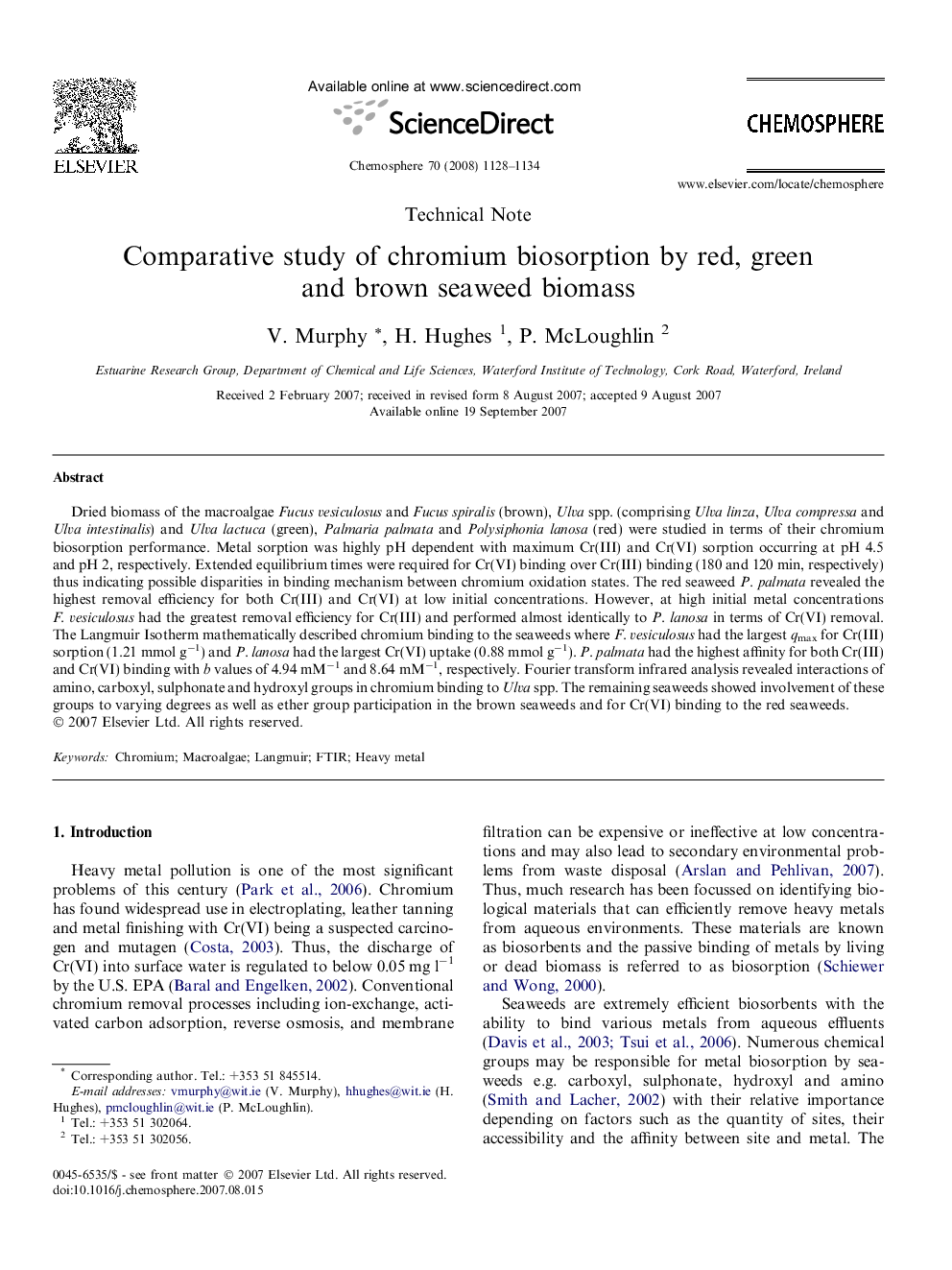| Article ID | Journal | Published Year | Pages | File Type |
|---|---|---|---|---|
| 4414692 | Chemosphere | 2008 | 7 Pages |
Dried biomass of the macroalgae Fucus vesiculosus and Fucus spiralis (brown), Ulva spp. (comprising Ulva linza, Ulva compressa and Ulva intestinalis) and Ulva lactuca (green), Palmaria palmata and Polysiphonia lanosa (red) were studied in terms of their chromium biosorption performance. Metal sorption was highly pH dependent with maximum Cr(III) and Cr(VI) sorption occurring at pH 4.5 and pH 2, respectively. Extended equilibrium times were required for Cr(VI) binding over Cr(III) binding (180 and 120 min, respectively) thus indicating possible disparities in binding mechanism between chromium oxidation states. The red seaweed P. palmata revealed the highest removal efficiency for both Cr(III) and Cr(VI) at low initial concentrations. However, at high initial metal concentrations F. vesiculosus had the greatest removal efficiency for Cr(III) and performed almost identically to P. lanosa in terms of Cr(VI) removal. The Langmuir Isotherm mathematically described chromium binding to the seaweeds where F. vesiculosus had the largest qmax for Cr(III) sorption (1.21 mmol g−1) and P. lanosa had the largest Cr(VI) uptake (0.88 mmol g−1). P. palmata had the highest affinity for both Cr(III) and Cr(VI) binding with b values of 4.94 mM−1 and 8.64 mM−1, respectively. Fourier transform infrared analysis revealed interactions of amino, carboxyl, sulphonate and hydroxyl groups in chromium binding to Ulva spp. The remaining seaweeds showed involvement of these groups to varying degrees as well as ether group participation in the brown seaweeds and for Cr(VI) binding to the red seaweeds.
